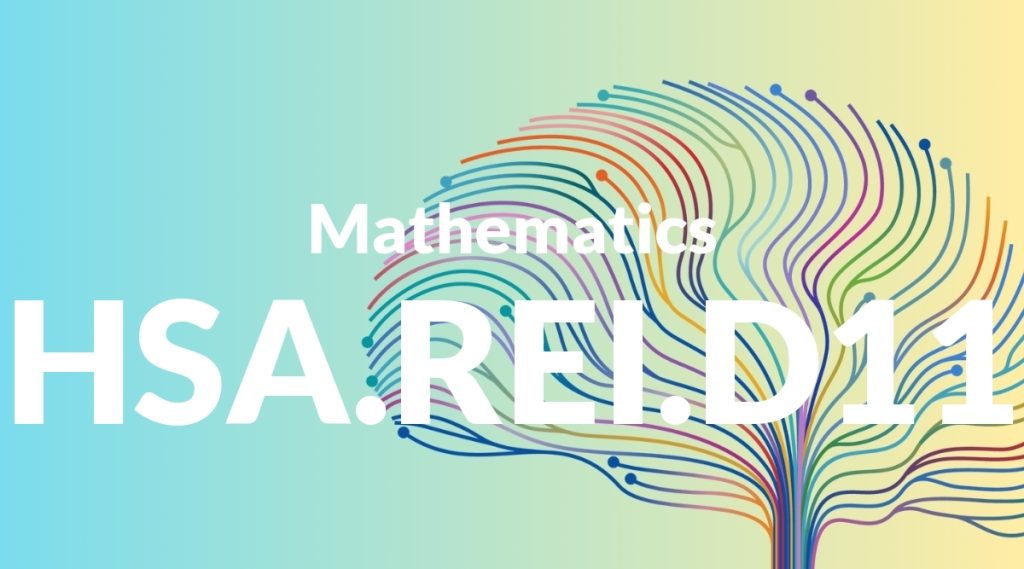Standard: HSA.REI.D11 – Explain why the x-coordinates of the points where the graphs of the equations y = f(x) and y = g(x) intersect are the solutions of the equation f(x) = g(x); find the solutions approximately, e.g., using technology to graph the functions, make tables of values, or find successive approximations. Include cases where f(x) and/or g(x) are linear, polynomial, rational, absolute value, exponential, and logarithmic functions.*
Grade level: High School: Algebra
Subject: Mathematics
Domain: Reasoning with Equations & Inequalities
Teacher Overview
This standard focuses on understanding that the x-coordinates of intersection points of two functions’ graphs represent the solutions to the equation f(x) = g(x). This concept is crucial for solving real-world problems where different scenarios or models need to be compared or equated. Students should have a solid grasp of graphing functions, identifying solutions to equations, and using graphing tools or tables to approximate solutions.
After mastering this standard, students will be able to solve more complex systems of equations and understand the behavior of different types of functions in various contexts.
Common Misconception 1
A common misconception is that the y-coordinates of the intersection points are the solutions. This is incorrect because the solution to f(x) = g(x) is where the x-values are equal, not the y-values.
Intervention 1
Use visual aids and graphing technology to show that the x-coordinates of the intersection points are the solutions. Reinforce this concept through guided practice.
Common Misconception 2
Another misconception is that only linear functions can intersect and have solutions. This is incorrect as various types of functions, such as polynomial, rational, absolute value, exponential, and logarithmic functions, can also intersect.
Intervention 2
Provide a variety of examples and practice problems involving different types of functions to demonstrate that intersections and solutions can occur in many forms.
Prerequisite Knowledge
Students should understand basic graphing of functions, the concept of a solution to an equation, and how to use graphing technology or tables of values to approximate solutions.
Subsequent Knowledge
Students will develop skills in solving complex systems of equations, understanding the behavior of different types of functions, and applying these concepts to real-world scenarios.
Instructional Activities
- Graphing practice with different types of functions to find intersection points
- Using graphing calculators or software to approximate solutions
- Creating tables of values to find successive approximations
- Real-world problem-solving activities involving break-even points and equilibrium analysis
- Group projects analyzing intersections in traffic or population models




